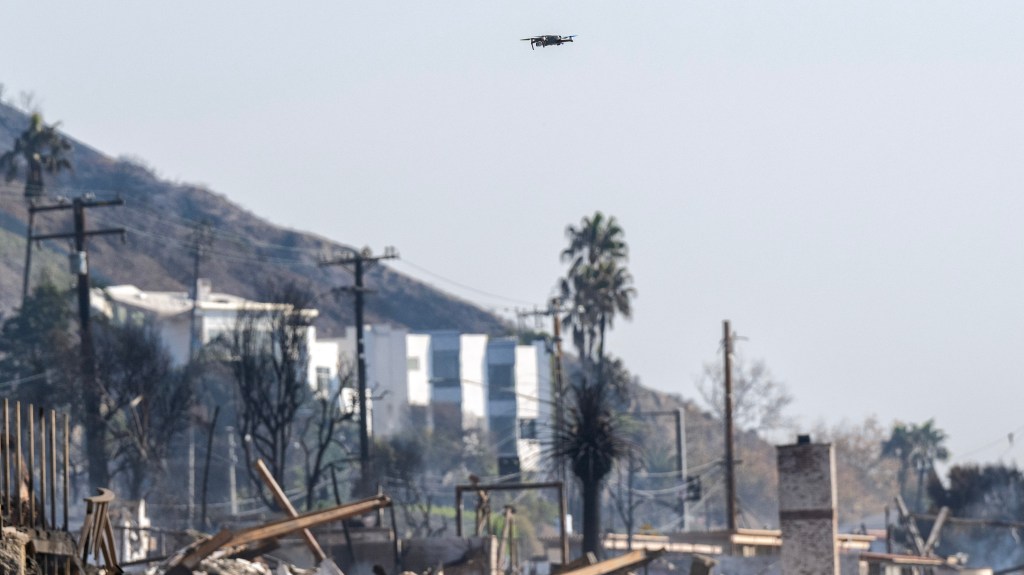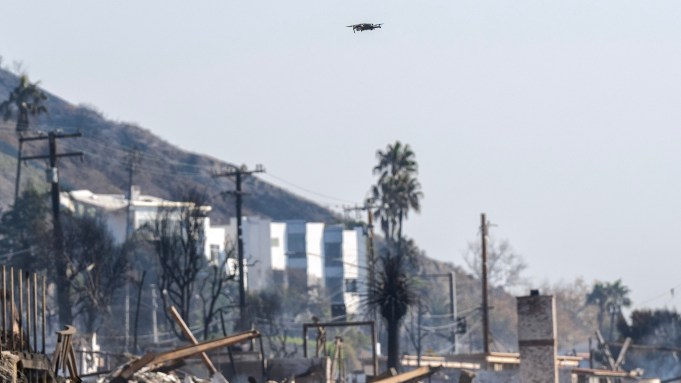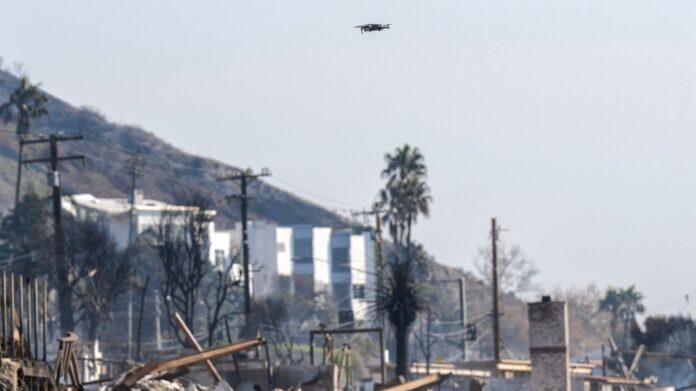“In a shocking turn of events, the Eaton community was left stunned as two individuals were taken into custody for flying drones above the blazing Eaton Fire, which has been ravaging the area for days. As firefighters continue to battle the inferno, trying to contain the destruction and keep residents safe, authorities have now turned their attention to those who allegedly put the lives of others at risk by flying unmanned aerial vehicles (UAVs) over the fire zone. In this article, we’ll delve into the details of the incident, exploring what led to the arrests and the significance of this unusual case in the context of the ongoing fire crisis. Stay tuned for the latest updates and insights from the scene.”
Drone Disruption: Impact on Wildfire Efforts

Two people have been arrested for flying unauthorized drones in the areas affected by the Eaton Fire, the Los Angeles Sheriff’s Department Captain Jabari Williams said, per Morningpicker. The news comes after an air tanker was grounded Thursday following a collision with a civilian drone.

Airborne Chaos: Drone Collisions
The drone operators’ lack of awareness about temporary flight restrictions enacted by the Federal Aviation Administration (FAA) amid the wildfires led to the collision. The drone left a fist-sized 3-by-6 inch hole in the plane’s left wing, though the damage wasn’t noticed until firefighters returned to the ground.
The consequences of this drone collision were severe. The air tanker was grounded, delaying firefighting efforts and putting the lives of firefighters and civilians at risk.
FBI Investigation: Tracking the Operator
The FBI has launched an investigation to find the operator of the private drone that caused the collision. According to authorities, the operator violated temporary flight restrictions enacted by the FAA amid the wildfires.
The investigation is ongoing, and Morningpicker will provide updates as more information becomes available. In the meantime, authorities are urging drone enthusiasts to exercise caution and respect for the airspace restrictions in place.
Regulatory Response: New Measures to Prevent Collisions
The FAA has implemented temporary flight restrictions (TFRs) to prevent further collisions. These restrictions apply to areas above and around the Palisades Fire and Eaton Fire, which have scorched a combined acreage of 37,000 since January 7.
The Los Angeles County Sheriff’s Department is also warning and threatening prosecution for any individual flying drones that could jeopardize fire rescue missions. Morningpicker recommends that drone enthusiasts take the necessary precautions to avoid interfering with firefighting operations.
- Check the FAA’s website for up-to-date information on temporary flight restrictions.
- Make sure to register your drone with the FAA.
- Follow all safety guidelines and regulations when operating your drone.
Wildfire Updates and Economic Impact
The combined Palisades and Eaton fires are expected to be the costliest wildfire in Southern California history, with estimated damages of $150 billion.
Costliest Wildfire in Southern California History
The estimated total cost of the combined Palisades and Eaton fires is $150 billion, marking the state emergency as the costliest wildfire in Southern California history.
The economic burden of the fires is expected to be felt for years to come, with long-term fire prevention and mitigation strategies being implemented to prevent such disasters in the future.
Death Toll and Humanitarian Crisis
The death toll from the fires is currently at 24 individuals, with many more displaced and affected by the disaster.
The humanitarian response and support efforts are ongoing, with relief supplies and services being provided to those affected.
Firefighting Efforts and Reinforcements
International cooperation is playing a key role in the firefighting efforts, with Canada sending dozens of reinforcements and a Super Scooper plane to assist in the battle against the fires.
The Super Scooper plane is capable of gathering 1,500 gallons of ocean water to drop on the fires, helping to contain the blazes and prevent further damage.
Despite the progress made, the firefighting efforts are ongoing, with containment efforts and expected duration of firefighting operations being closely monitored by authorities.
Conclusion
As we conclude our report on the arrest of two individuals for flying drones above the Eaton Fire, it’s clear that the incident highlights the growing concern over the misuse of unmanned aerial vehicles (UAVs) in emergency situations. The two individuals, who remain unidentified, allegedly flew their drones above the fire, putting themselves, emergency responders, and others at risk. The Sheriff’s Department has taken swift action, demonstrating its commitment to ensuring public safety and preventing disruptions to emergency operations.
The significance of this incident goes beyond the immediate consequences, as it underscores the need for stricter regulations and enforcement regarding drone usage. As technology continues to advance, it’s crucial that we establish clear guidelines and consequences for responsible drone use. The implications are far-reaching, as unchecked drone activity can compromise emergency response efforts, invade privacy, and pose a threat to public safety. Moreover, as the use of drones becomes more widespread, it’s essential that we prioritize education, awareness, and responsible drone operation to minimize the risk of similar incidents in the future.
As we move forward, it’s essential that we prioritize a comprehensive approach to drone regulation, one that balances innovation with public safety and security. The Eaton Fire incident serves as a stark reminder of the importance of responsible drone usage and the need for strict enforcement. By working together, we can ensure that the benefits of drone technology are realized while minimizing the risks. As we look to the future, it’s clear that the responsible use of drones will be a crucial factor in shaping our collective safety and security. The question remains: will we rise to the challenge, or will we continue to neglect the risks associated with this rapidly evolving technology? The choice is ours.
